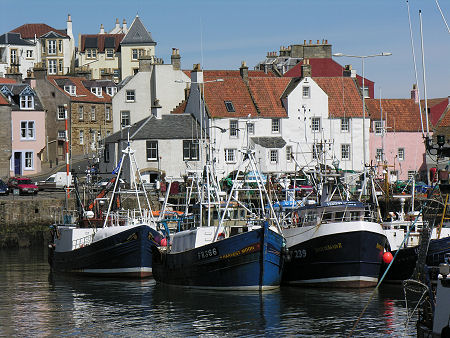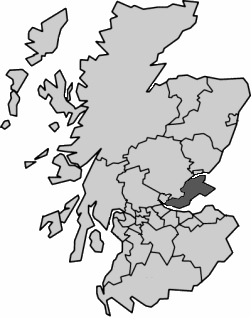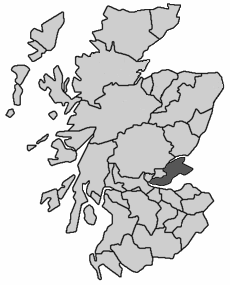 Pittenweem in Fife |
Fife is one of the 32 unitary council areas into which Scotland has been divided since 1996. Of all of Scotland's mainland council areas, Fife has been the most constant and least altered. Between 1975 and 1996 it was a region, and before 1975 it was one of Scotland's traditional counties, sometimes called Fifeshire. For accommodation in Fife and a full list of features, see our Kingdom of Fife area pages.
 Fife Since 1996 Note About Image Copyright |
Fife's existence as a distinct entity can actually be traced back even further: to the Pictish Kingdom of Fib in the centuries after the departure of the Romans. It is for this reason that Fife is commonly referred to as "The Kingdom of Fife", or simply "The Kingdom".
This constancy of existence may in part be due to geography. Fife occupies the peninsula formed by the Firth of Forth to the South and the Firth of Tay to the north. It isn't an island but until relatively recent times you needed a ferry or a long detour to reach it from most other parts of Scotland.
In terms of size, Fife is the 13th largest council area in Scotland, while in terms of population it is ranked 3rd. In part this reflects the industrial heritage of the central and western parts of Fife: and while the Fife Coalfield has long gone, new industries have grown up in large towns like Glenrothes, Kirkcaldy and Dunfermline. The eastern part of Fife is a contrast to its other two thirds. The main settlements are Cupar and, in the far north-east, St Andrews, home to Scotland's oldest university and, perhaps more famously, home to the game of golf.
The coastline of Fife overlooking the Firth of Forth is home to a series of harbours and ports that get increasingly attractive the further east you go, with those in the "East Neuk" of Fife being some of the most picturesque villages anywhere in Scotland.
Fife is bordered by just two other unitary council areas, Clackmannanshire and Perth & Kinross.
From the point of view of local authority coverage, the area now covered by Fife formed the traditional county of Fife. A tidying up of the map of counties which reduced their number to 33 in 1890 transferred ownership of an exclave of Perthshire around Culross and Tulliallan to Fife, but otherwise its boundaries have been unchanged.
When Fife became one of the 12 regions into which Scotland was divided from 1975 to 1996, it formed the upper of two tiers of local government. The lower tier comprised three district councils: North-East Fife, Kirkcaldy and Dunfermline, whose areas reflected traditional divisions within Fife. In 1996, a further major reorganisation swept away Scotland's regions and districts and replaced them with 32 unitary councils. Fife became a unitary council area and has since divided its area into three management areas based on the boundaries of the three district councils. They are called St Andrews & East Fife; Kirkcaldy & Mid Fife; and Dunfermline & West Fife.

|
|
|
InformationFife Council:www.fife.gov.uk |
 Fife, 1975 to 1996 Note About Image Copyright |
 Fife, 1890 to 1975 Note About Image Copyright |
 Fife Before 1890 Note About Image Copyright |